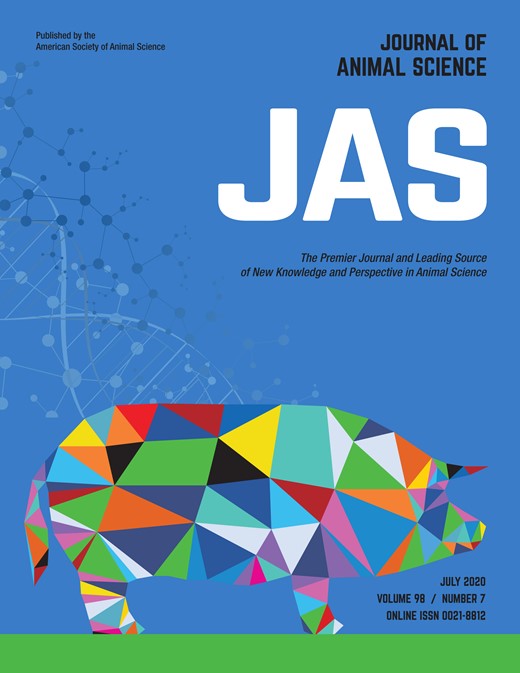-
Views
-
Cite
Cite
Molly L McGhee, Hans H Stein, The apparent ileal digestibility and the apparent total tract digestibility of carbohydrates and energy in hybrid rye are different from some other cereal grains when fed to growing pigs, Journal of Animal Science, Volume 98, Issue 7, July 2020, skaa218, https://doi.org/10.1093/jas/skaa218
Close - Share Icon Share
Abstract
An experiment was conducted to determine the apparent ileal digestibility (AID) and the apparent total tract digestibility (ATTD) of energy, starch, and total dietary fiber (TDF) in two varieties of hybrid rye and compare these values with values obtained for barley, wheat, corn, and sorghum. It was hypothesized that there are no differences in AID and ATTD of energy and nutrients among hybrid rye, barley, wheat, and sorghum. Twenty-four ileal cannulated barrows (initial body weight = 28.1 ± 3.0 kg) were randomly allotted to a two-period experimental design with six diets and four replicate pigs in each period for a total of eight replicate pigs per diet. Diets consisted of 97% of each grain, and each pig received a different diet in each period. The initial 5 d of each period were considered the adaptation period, whereas urine and fecal materials were collected from the feed provided from day 6 to 10, and ileal digesta were collected on days 12 and 13 of each period. Results indicated that the metabolizable energy (ME) on a dry matter (DM) basis was greatest (P < 0.05) in corn and wheat (3,732 and 3,641 kcal/kg DM), and least (P < 0.05) in barley (3,342 kcal/kg DM), whereas the two hybrid ryes contained 3,499 and 3,459 kcal/kg DM, respectively. The ME values in hybrid rye were not different from values determined for barley and sorghum (3,573 kcal/kg DM). In all grains, the AID of starch was greater than 90%, and the ATTD of starch was nearly 100%. Barley contained more TDF than the other cereal grains, and the two hybrid ryes had concentrations of soluble dietary fiber that were close to the concentration in barley but greater than in wheat, corn, and sorghum. The AID of TDF was less than 35% for all cereal grains, but the ATTD of TDF was greater (P < 0.05) in the two hybrid ryes (68% and 70%) than in the other ingredients (56% to 58%). In conclusion, feeding hybrid rye to pigs resulted in reduced pre-cecal absorption of energy compared with wheat, corn, and sorghum, but because hindgut fermentation of fiber was greater in hybrid rye than in other cereal grains, the content of ME in hybrid rye was not different from barley and sorghum but less than in corn and wheat.





